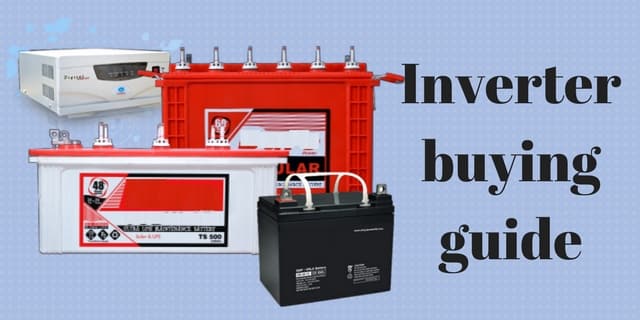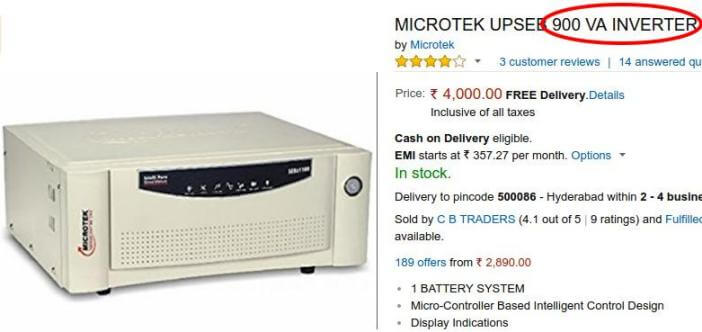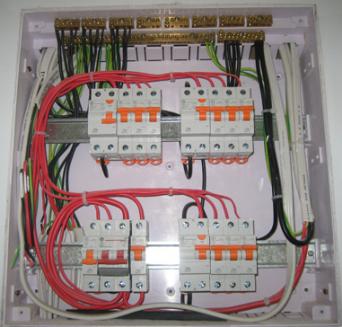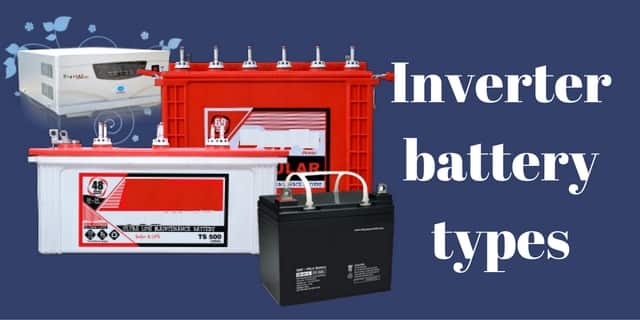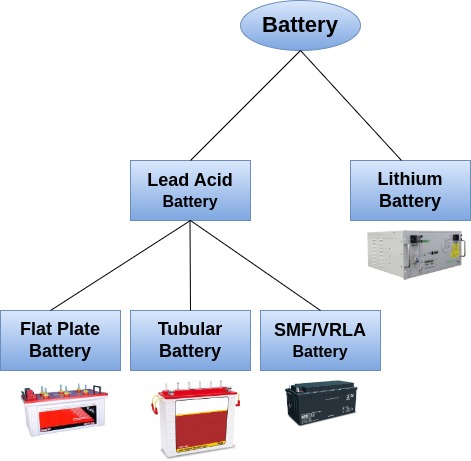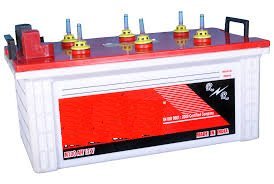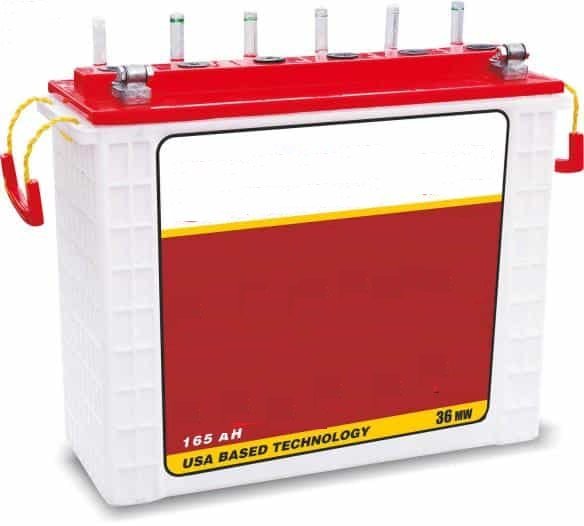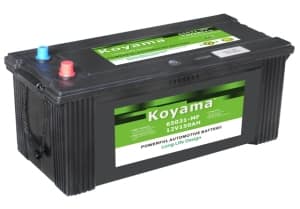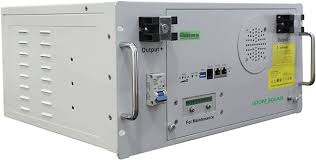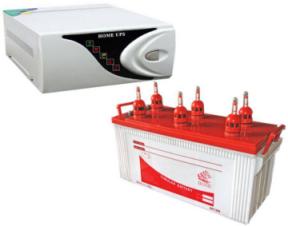How to choose the best inverter for home? Comprehensive inverter buying guide 2024
The power backup solutions are popularly known as Power inverter or inverter in India. Choosing the right inverter and battery are the critical decision factors in building the right power backup solution. In this article, we discuss in choosing the right type of battery and right capacity or size.
Try our inverter selector to choose right inverter by answering simple questions without reading any buying guide.
The three main components of the power backup solution are
- Power grid to charge battery
- Inverter battery to store DC current
- Inverter
Inverter buying guide
Power grid is default and electricity connection at your home. The power from the power grid recharge the battery. At the event of power cut the battery DC current needs to be converted to AC current with the help of Inverter. But in general the total power backup solution is called as inverter in India. We discuss the inverter and battery buying guides in two different sections as elaborately as possible.
First calculate your power requirement
The first thing is to calculate how much backup you want, or how many appliances you want to support. The general power consumption about common appliances is listed in below table.
| Appliance | Power requirement |
|---|---|
| Fan | 80 |
| Tube light | 40 |
| CFL | 20 |
| LED bulb | 7 |
| Television | 120 |
Say you want to support 4 fans, 3 tube lights, 3 CFL bulbs, 2 LED bulbs and one Television. The total power requirement is (4*80 + 3*40 + 3*20 + 2*7 + 120) = 634 watts. So you need inverter which can support 634 watts.
Inverter capacity calculator
Inverter capacity is directly proportional to total load that you want to support. The accurate formula is total load to be supported, divided by the power factor. There is efficiency loss in the conversion of energy that indicated by power factor. In other words we are balancing the energy efficiency by dividing with the power factor.
The inverter capacity is measured in Volt Ampere, often abbreviated as VA. In all the product description the VA rating is mentioned. Please see below picture on how to identify the VA rating.
For earlier example, we have mentioned for the power requirement of 634 watts, the required VA rating of the inverter is 634 / 0.8 = 792 VA. The nearest inverter with matching need is 900 VA. So better consider 900 VA inverter to support your power requirement.
Inverter VA vs Battery WA
The inverter capacity is measured in VA and battery capacity is measured in WA. We will discuss more about battery capacity in battery buying guide. People wonder why there are two capacities? What is the purpose of each capacity?
The simple analogy is this. Consider ‘water well’, you use bucket tied to a rope to pull the water from the well. The water in the well can be compared to the battery capacity, than the size of bucket is inverter capacity. You can see as the battery capacity is total electricity stored and inverter capacity is how much you can serve at single time.
So there should be proper match between the battery capacity and inverter capacity. Even you buy large capacity battery, and low capacity inverter (example: 600 VA) then you cannot support refrigerator or few fans, because their total load exceeds the 600 VA.
Sine wave inverter vs Square wave inverter
As we discussed earlier inverter converts DC current to AC current. But depending on how the AC current looks like, the inverters are classified as Sine wave inverter or Square wave inverter. The detailed differences are mentioned below in a table
| Feature | Square wave inverter | Sine wave inverter |
|---|---|---|
| Supported appliances | Motors | Computers, laptops, refrigerators, ovens |
| Noise level | High, creates humming noise in inverter as well as in appliances | Normal |
| Safety of appliances | Less | High |
| Price | Economical | High |
| By www.zelect.in | ||
It is always good to have Sine wave inverter even though they are costly for the sake of safety and longevity of the appliances. There are modified sine wave inverters too which are cheaper than sine wave and costlier than square with moderate performance. In some sense they are placed in between sinewave and squarewave and very few models available in the market so you can safely ignore them. You can read more about Sine wave inverter vs Square wave inverter in our other post.
Inverter vs UPS
The main difference is the time delay. UPS is used on general only to backup your system. If you connect desktop computer on inverter, any power loss, shutdowns the computer as it takes one microsecond to fall over to the backup power solution. Inverter is not suitable for computer backup due to the delay in switching. The computer crash not only leads to the lost of data, unsaved programs, but also may damage hard disk and motherboard. Know more about difference between ups and inverter in our other post.
| Feature | UPS | Inverter |
|---|---|---|
| Use case | Provide backup to Desktop, computer backup | Provide backup to TV, fans, lights, household appliances |
| Time delay to switch at the event of power cut | Negligible | Microsecond |
| Backup time | 10 to 20 minutes | 3 to 6 hours, depending on battery and inverter |
| Maintenance | No maintenance | Need to fill water toppings at regular intervals of time. |
| Price | 2,000 Rs - 6,000 Rs | 10,000 Rs - 40,000 Rs |
| By www.zelect.in | ||
Before you buy Inverter check the wiring of home
The homes should have facility or provision for backup. It is easy to provide backup for total home with the help of inverter from the main source. But to provide backup to total home you need large size battery and inverter. Most of the cases, people wants to provide backup to only few selected fans, lights and appliances. In that case, wiring should be in such a way to allow to run few selected appliances on the inverter. So first consult your technician about the wiring and get it done before you purchase inverter and battery.
Bigger appliances require high power requirement to start the appliance, for example AC and refrigerator. In general to support refrigerator 1k VA inverter, and to support 1 ton AC, 2.5k VA inverter is needed. The battery requirement is also high. So you should exclude these big appliances from the inverter wiring.
Best Inverter brands
The famous inverter brands are Luminous, Microtek, Exide, APC and Exide. Most of the brands also sells the Battery along with the inverter. It is good to buy the combo as you don’t need to worry about the compatibility. We are listed few handpicked inverters here for your reference.
Best handpicked sine wave inverters
- Luminous Zelio 1100 VA Sine Wave Home UPS Inverter Pure Sine Wave Inverter
- Su-Kam Falcon+ 750 Pure Sine Wave Inverter
- Su-Kam Falcon+ 900VA/12V Pure Sine Wave Inverter
- Exide 850va Home ups + Exide 150AH Battery
- Exide 850va Home ups + Exide 150AH Battery
- Su-Kam Falcon++ 1100/12V Pure Sine Wave Inverter
- Su-Kam Falcon + 1100 Pure Sine Wave Inverter
- Luminous Zelio 1100va + Exide 150AH Battery
- Luminous Zelio 1100va + Exide 150AH Battery
- Luminous Zelio 1100va + Exide 150AH Tubular Battery
Best handpicked square wave inverters
- Su-Kam SHARK 900 VA Square Wave Inverter
- Su-kam Shark 1600Va Home UPS inverter
- Luminous Rapid Charge 1650VA /12V Single battery Square Wave Inverter
- Su-Kam Shark 700 Va Square Wave Inverter
- Microtek UPS-700EB Square Wave Inverter
Where to buy the inverter online
All the top brands inverters available online in the market. Unlike batteries, the Inverters are not hazmat products. The products are available in Amazon, Flipkart and other top ecommerce stores. Please see manufacturers site and buy the latest model. Be clear about returns and shipping policy before placing the order.
Final checklist for before finalising Inverter
- If you are first time buyer, try to purchase the Inverter, battery combo.
- It is good to buy Inverter trolley, so that you can place inverter, battery inside a trolley. It is easy to move if you place the Inverter, battery in a trolley. Before buying trolley make sure you have enough place in home to put the trolley
- Finally, make sure your home have proper earthing, to avoid accidental electrocution.
- Look for warranty, longer warranty means better products. As we have mentioned the price of battery increase if the warranty increase.
Inverter Battery buying guide
How to calculate battery capacity?
The battery names looks like Luminous 120Ah Tubular Battery, Power Bank Series - 50AH - 220 AH, Macroz Series - 25AH, 50AH. You might wonder what are the terms AH or Ah. AH or Ah is an acronym for Ampere Hour, meaning the amount of current the battery can supply for the specific duration. 100Ah battery capacity can be expressed in the following ways.
- 100 Amperes of current for 1 hour
- 50 Amperes of current for 2 hours
- 25 Amperes of current for 4 hours
- 1 Ampere of current for 100 hours
Total load in watts
It is the number of watts you need or devices in your home consume. Say you want to backup 6 lamps of 40 watts each and 3 fans of 75 watts. Then your effective power requirement of the total load is 6*40 + 3*75 = 465 Watts.
Backup in hours
A number of backup hours you need. Now you can clearly see as the number of backup hours increases the required battery size also increases.
Voltage
The voltage of battery cell. Usually, it is referred as Nominal voltage. Almost all of the top brands of batteries have 12V or 12 voltages. We guess 24V and 48V batteries are not available in India.
Below table beautifully present the examples of calculating battery size, you can call it as inverter battery calculator.
| Power requirement | Backup in hours | Suggested battery size |
|---|---|---|
| 600 Watts | 2 hours | (600 * 2) / 12 = 100Ah |
| 900 Watts | 2 hours | (900 * 2) / 12 = 150Ah |
| 1000 Watts | 3 hours | (1000 * 3) / 12 = 250Ah |
Battery types
In general, inverter batteries are divided into two categories namely Lead Acid battery and Lithium battery. Again Lead Acid batteries are three types. Flat plate battery, Tubular battery, Sealed Maintenance Free(SMF)battery. Every battery varies depending on the internal technology used to store the current. The features which differ are safety, efficiency, battery life, maintenance, and price. A detailed analysis of every battery type is mentioned below.
Flat plate battery
These are first generation batteries and in fact most used batteries as well. It is a type of lead acid battery. There are two electrodes one is of type lead and other is lead dioxide and electrode used is sulfuric acid. Flat plate batteries are lightweight batteries and most economical we well. The price of Flat plate batteries is around Rs. 9,000 to Rs. 15,000 depending on battery capacity. The only cons of this battery type are more maintenance - you need to replenish the mineral-free distilled water in the regular intervals of time, 3 months to 6 months. Delaying the water top up may damage the battery itself. Aside from maintenance flat plate batteries have short battery life and are very unsafe, they regularly emit poisonous gases while charging and discharging. So you need to keep it away from inside the home and should have proper ventilation. Because of these reasons Flat plate batteries are getting outdated slowly being replaced by tubular batteries. Nowadays few brands do not manufacture flat plate or will have the only a couple of models. For example, Luminous have only a couple of models.
Tubular battery
Tubular batteries are next improved version of flat plate batteries. They have long battery life up to five years, more efficient due to deep charging cycles, relatively low maintenance. The only con is they are costly, priced around Rs. 9,000 to Rs. 25,000. The reason for being the efficiency and longer battery life is the positive plate is replaced with tube and protected by a cloth. Because of this tube, it is called as Tubular battery. You can read more about tubular battery versus lead acid battery in our other post.
Maintenance free batteries
As the name indicates there is no need of maintaining the batteries. No need of filling distilled water at regular intervals. Bye bye to the water toppings. This is possible because of a special type of electrolyte which need not be replenished. Apart from that other best features is safety. Maintenance free batteries do not emit any poisonous or harmful gases. These are best fit for old couples or busy people who do not have time to refill the water. Maintenance free batteries also called as sealed batteries or Deep Cycle SMF Sealed Maintenance Free or VRLA (Value Regulated Lead Acid). Most of the brands do not manufacture this type of batteries. Exide had Inva safe models for this battery but unfortunately, they have removed from that market. As of now based on our research only Luminous and Okaya are selling these type of batteries. It is very difficult to buy find these batteries as either they are not available, or out of stock, or some of the battries are not make compatible with inverters. The downside of these batteries is shorter battery life and expensive. Below table explains the differences in very lucid manner.
| Feature | Flat plate battery | Tubular battery | |
|---|---|---|---|
| Battery Life | Low (~ 3 Yrs) | High (~ 5 Yrs) | Medium (3 to 4 Yrs) |
| Maintenance | High | Medium | Low |
| Water toppings | High | Medium | Low |
| Safety | Low | Low | High |
| Releases harmful gases | Yes | Yes | No |
| Ventilation requirement | Yes | Yes | No |
| Weight | Low | High | Depend on the model. |
| Price | Rs. 9,000 to Rs. 15,000 | Rs. 9,000 to Rs. 25,000. | More than Rs. 11,000 |
| Top Brands | Amaron, Exide, Luminous, Su-Kam | Amaron, Exide, Luminous, Su-Kam | Luminous |
Lithium Battery
The latest trending technology in the world of batteries is the lithium battery. Without delving too deeply, a lithium battery is typically composed of several small battery cells, similar to those found in TV remote batteries. Unlike traditional batteries, lithium batteries do not contain sulfuric acid, require water topping, or emit hazardous gases, making them essentially maintenance-free. Lithium batteries operate in conjunction with a Battery Management System (BMS) to safeguard against overcharging and overheating. While these batteries are gaining popularity for use in solar inverters, they can also be used with regular household inverters. The biggest disadvantage of lithium batteries is their high cost. Conventional tubular batteries cost approximately 15,000 to 20,000 Indian rupees, whereas lithium batteries can cost over one lakh Indian rupees. However, in the future, lithium battery prices might decrease, making them more affordable for everyone.
Lead acid battery vs lithium-ion battery
| Aspect | Lead-Acid Batteries | Lithium Batteries |
|---|---|---|
| Material | Lead plates, sulfuric acid electrolyte | Lithium compound cathode, graphite anode, electrolyte (varies) |
| Maintenance | Requires maintenance (e.g., topping up water) | Maintenance-free |
| Cost | Lower initial cost, higher lifetime cost due to replacements and maintenance | Higher initial cost, lower lifetime cost due to durability |
| Cycle Life | Limited, typically 200-500 cycles | Longer, typically 500-5000+ cycles |
| Charging Time | Slower | Faster |
| Self-Discharge Rate | Higher | Lower |
| Weight | Heavier | Lighter |
| Size | Larger | Smaller |
| Environmental Impact | Contains lead and acid, requires proper disposal/recycling | Generally considered more environmentally friendly due to fewer toxic components and longer lifespan |
| By www.zelect.in | ||
Avoid local battery manufacturers
Many are tempted to buy very good brand inverter but local brand battery which is can be a very incorrect decision based on many aspects. Local brands usually do not follow safety, efficiency standards and they tend to have a relatively low lifespan. But local brands vouch for it and say as they are manufactured very close to this place they are offering very cheap, almost half of the price. But selecting the right battery is more important than inverter based on safety concerns. Many battery types release little fumes and poisonous gases like carbon monoxide and big brands ensure the emission to be the lowest level, which local brands do not give much importance. Local batteries tend to insist excessive maintenance work. Apart from that, local batteries do not have warranty or guarantee. Not only that do not buy refurbished batteries even for a cheaper price as they will be most likely unsafe and have shorter life span.
Look for inverter compatibility
Always check for battery inverter compatibility. The ideal battery capacity is total power multiplied by backup hours and the final result is divided by voltage. The inverter VA is directly associated with the total power required. Say your inverter is 150 VA and you need a backup of 2 hours then buying a 25Ah battery is sufficient but buying 200Ah is a waste of money. Not only that few inverters do not support high battery capacity or low battery capacity as well. So the best solution is to look for “inverter compatibility”. If you are buying inverter also the first time then it is always good to go with inverter and battery combos. Combos are pack of an inverter, compatible battery and optional trolley.
Select long battery warranty
Guarantee and warranty are usually given to all the home appliances but for inverter batteries, it is different as the inverter batteries tend to get damaged very easily. Because of this, you may come across the situations where the two batteries with similar specifications have different pricing based on the warranty. Longer warranty is always better even you need to shed few more bucks.
Battery guarantee means the battery is freely replaced in case of damage in the specified duration, whereas warranty refers to the duration for which free repair is done. Say an inverter battery guarantee is 2 years and warranty is 3 years meaning if the battery damaged, then it is replaced in 2 years and can be repaired freely for 3 years for malfunctions. Please see some manufacturers refer “Guarantee” term as “Warranty replacement”. Luminous specify in the same way. Some manufacturers simply say as warranty and clearly specify the replacement is up to the jurisdiction of the company, for example, Exide. You have to dig deep to know about the replacement in the terms and conditions of warranty.
Top brands and after sales support
As we have mentioned above it is always good to take from well-known brands or manufacturers. Top and well-known brands in India for inverter battery are Amaron, Exide, Luminous, Okaya, Su-Kam. After sales support is a must and should be great for unexpected scenarios like battery repair or replacement. Many top brands even provide distill water top up facility as well. It means the brand executive visit your home and top up or refill the battery distill water level. The customer care numbers of all the top brands are given below
| Brand | Product links | Customer care number |
|---|---|---|
| Amaron | Amaron batteries | 1800 425 4848 |
| Exide | Exide batteries | 1800 103 5454 |
| Luminous | Luminous batteries | 1800 103 3039, 1860 500 3939 |
Inverter battery prices
As we have mentioned above inverter battery price depends on the type of battery, brand, capacity, battery warranty and the dealer.
- If you are replacing the old battery then you can sell old battery back to the vendor or dealer and can get additional 10% to 20% off on the original new battery price.
- Same products cost differ based on the warranty. Long warranty costs more. For example Luminous EC 18036 I 150Ah Tubular Battery comes with 3 years replacement warranty and the price is around Rs. 14,000 whereas Luminous RC 18000 I 150Ah Tubular Battery comes around Rs.11,200 with 2 years replacement warranty.
- Ask the dealer about transporting and installation of battery cost as well, is it included in the battery cost or excluded?
- Please see the price depends on the dealer to dealer also. The approximate prices of batteries are given below
| Battery type | Battery capacity | Approximate price |
|---|---|---|
| Flat plate | 135 Ah | Rs. 9,700 |
| Flat plate | 150 Ah | Rs. 10,200 |
| Tubular | 120 Ah | Rs. 8,800 |
| Tubular | 150 Ah | Rs. 11,200 |
| Tubular | 160 Ah | Rs. 14,000 |
| Tubular | 180 Ah | Rs. 16,000 |
| Tubular | 200 Ah | Rs. 17,000 |
| Tubular | 220 Ah | Rs. 17,500 |
| Maintenance free | 100 Ah | Rs. 11, 000 |
| Maintenance free | 200 Ah | Rs. 19,000 |
Where to buy inverter battery online?
Inverter batteries are hazmat products, kind of unsafe products. Precautions are necessary to keep in the warehouse and while transporting. Because of these reasons, there are very few batteries available online. You can check out the batteries on Amazon, Snapdeal and Flipkart. Apart from that, there are few companies just selling batteries like Battery Bhai, let's buy battery and book my battery. Most of these firms ships from the nearest dealer from your location. Know more about simple tricks to get Inverter battery cheap in our other post.
Best inverter batteries
Tubular batteries last long but need regular maintenance. Lithium batteries cost more upfront but don't need maintenance. Deciding between them means considering maintenance and cost. Check our detailed guide to pick the best battery for you.
Best flat plate inverter batteries
- Luminous RedCharge RC 18000 ST 150AH Inverter Battery
- Exide Industries 150Ah Insta Brite Inverter UPS Battery
- Livguard Invertuff IT 1636STJ | 160 Ah Inverter Battery
- Luminous IL 16039 | 135 Ah Flat battery
- Luminous IL 18039 I 150Ah Flat Battery
- Exide Gelmagic
- Exide Invamore
- Amaron CR-I100H29R 100AH Flat Plate Battery
- Amaron Current CR-I1350D04R 135AH Flat Plate Battery
- Amaron Current CR1500D04R 150 AH Flat Plate Inverter Battery
Best Tubular inverter batteries
- Luminous Red Charge RC 18000 150 Ah,Tall Tubular Inverter Battery
- Livguard IT 1672TT Tall Tubular Battery |160 Ah
- Genus Carbon GCT265 Tall Tubular 240 AH Inverter Battery
- Exide Technologies Inva Tubular Battery 150Ah
- Luminous Inverlast ILTT20060 160 Ah Tall Tubular Inverter Battery
- Okaya Pro Power OPTT19060 160Ah Inverter Battery
- Luminous UCTT 18066 Tubular Inverter Battery
How to increase the life of inverter battery
There are few simple things by following you can increase the lifespan or longevity of inverter battery.
- First and most important, replenish the distilled water at right time. Depending on your battery type and usage pattern it may take one month to 3 months. Better keep a reminder in your smartphone calendar or make habit of checking on every first of the month.
- Apply grease the socket connections to protect the inverter battery from corrosion or rust decays. If there is corrosion already better to remove it with the help of the old brush, hot water and baking soda.
- The the battery discharge completely once in a month and freshly charge it again. It will refresh the inner electrolyte.
- It is always better not to connect high load devices to the inverter and overuse the devices when they are not necessary. Using energy efficiency the home appliance also lowers the burden on the inverter battery significantly.

Our smart selection tool guides you to the perfect and effortless purchase every time.
Facebook Twitter Email
Recommended articles for Inverter
Inverter types and buying guide
-
How to choose the best inverter for home? Comprehensive inverter buying guide 2024
-
Hidden secrets of Inverter battery warranty
-
Simple tricks to get Inverter battery cheap
-
All about distilled water for inverter batteries
-
Tubular battery vs Lead acid battery
-
Difference between ups and inverter, in India
-
Square wave inverter vs Sine wave inverter, India, 2024
-
Best Inverter Battery in India, 2024
